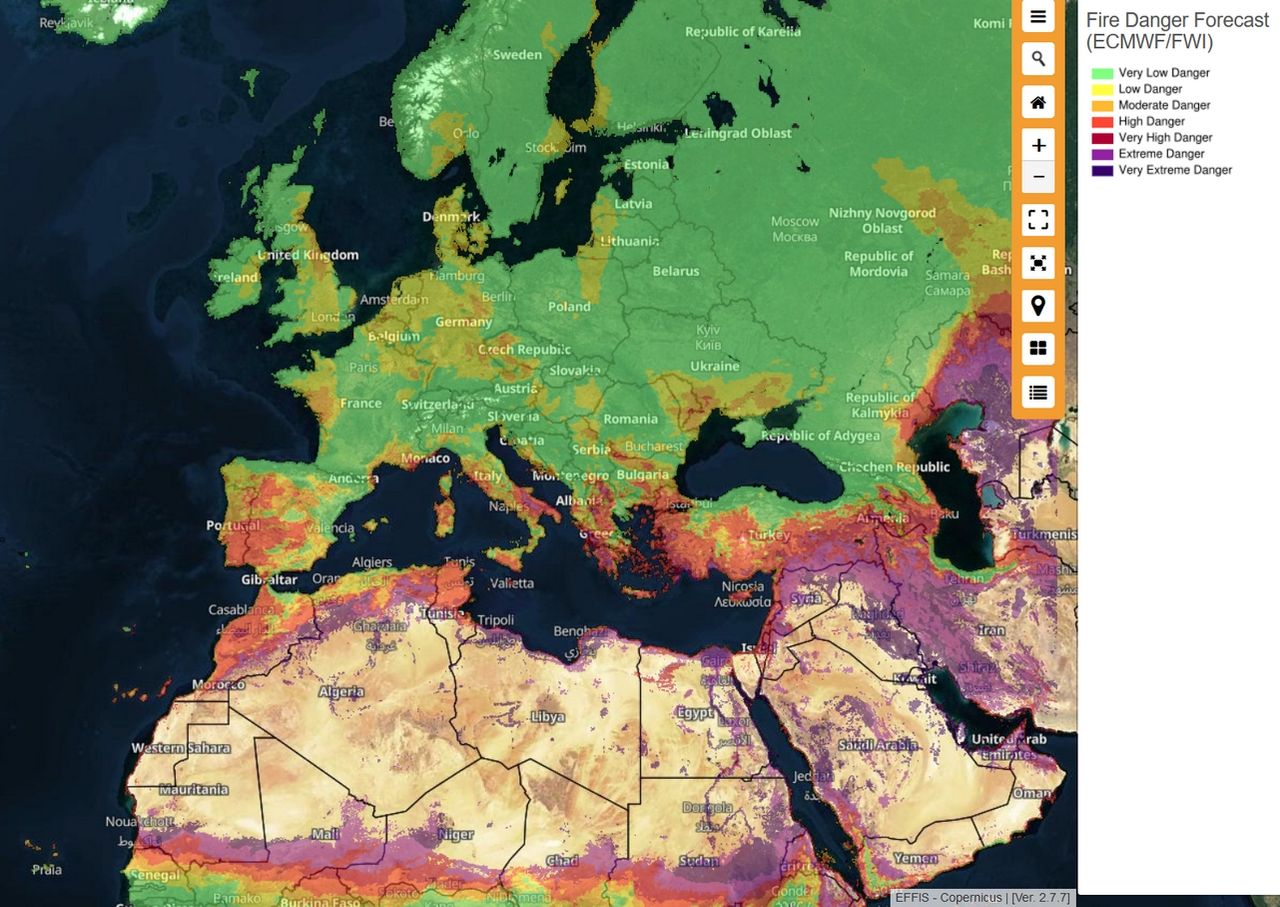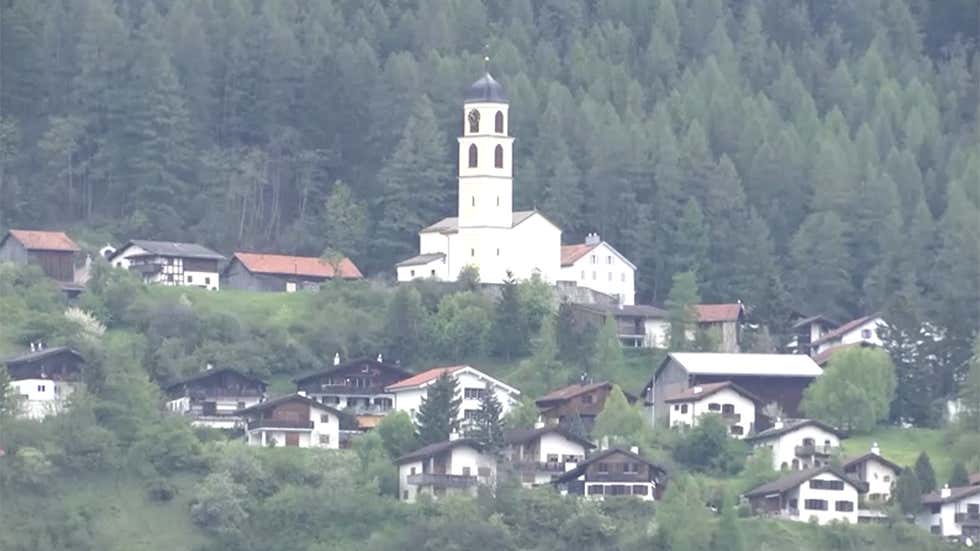Global Forest Loss Reaches Record High: Wildfires Fuel The Destruction

Table of Contents
The Devastating Impact of Wildfires on Global Forests
Increased Frequency and Intensity of Wildfires
Climate change is a primary driver of the increased frequency and intensity of wildfires globally. Rising global temperatures and prolonged droughts create tinderbox conditions, making forests more susceptible to ignition and rapid fire spread. Regions like the Amazon rainforest, Australia, and Siberia have experienced particularly severe wildfire seasons in recent years, resulting in the loss of millions of hectares of irreplaceable forest. For example, the 2019-2020 Australian bushfires burned an estimated 18.6 million hectares, devastating wildlife and releasing massive amounts of carbon dioxide into the atmosphere.
- Increased lightning strikes: Warmer, drier conditions increase the frequency of lightning strikes, a common wildfire ignition source.
- Longer fire seasons: Prolonged periods of heat and drought extend the wildfire season, providing more opportunities for fires to start and spread.
- Expansion of fire-prone vegetation: Land use changes, such as deforestation and agricultural expansion, contribute to the growth of fire-prone vegetation, creating fuel for larger and more intense wildfires.
The Role of Deforestation in Wildfire Risk
Deforestation significantly increases the risk of wildfires. The removal of trees creates drier conditions, leaving underbrush and other vegetation more vulnerable to ignition. Logging, agriculture, and mining practices fragment forests, eliminating natural firebreaks and creating conditions ideal for rapid fire spread. This "forest fragmentation" exacerbates the impact of wildfires, making them more destructive and difficult to contain.
- Removal of natural firebreaks: Intact forests often contain natural firebreaks, such as rivers or wider gaps between tree stands, which help to slow or stop the spread of wildfires. Deforestation removes these natural barriers.
- Increased accumulation of dry underbrush: The removal of trees leaves behind a dense layer of dry underbrush, acting as fuel for wildfires.
- Loss of biodiversity: Healthy, biodiverse forests are more resilient to wildfires. Deforestation reduces biodiversity, making forests more vulnerable to fire damage.
Beyond Wildfires: Other Key Drivers of Global Forest Loss
Illegal Logging and its Devastating Consequences
Illegal logging is a significant contributor to global deforestation. This illicit activity operates on a massive scale, depriving countries of valuable timber resources and causing widespread environmental damage. Corruption and weak governance often enable illegal logging operations to flourish, undermining efforts to protect forests.
- Loss of valuable timber species: Illegal logging targets high-value timber species, leading to their depletion and impacting forest biodiversity.
- Habitat destruction: The clearing of forests for illegal logging destroys habitats, threatening countless plant and animal species.
- Soil erosion: The removal of trees increases soil erosion, reducing soil fertility and increasing the risk of landslides.
Agricultural Expansion and its Impact on Forests
The conversion of forests into agricultural land for crops and livestock is a major driver of deforestation. Unsustainable agricultural practices, such as slash-and-burn agriculture, further exacerbate the problem. The demand for palm oil and beef, for example, has fueled massive deforestation in Southeast Asia and South America.
- Deforestation for soy production in the Amazon: Vast areas of Amazon rainforest are cleared for soy production, a key ingredient in animal feed.
- Palm oil plantations in Southeast Asia: The expansion of palm oil plantations has resulted in significant deforestation in countries like Indonesia and Malaysia.
- Cattle ranching in the Cerrado: The Cerrado savanna in Brazil is being converted into pastureland for cattle ranching, leading to widespread deforestation.
The Dire Consequences of Record-High Global Forest Loss
Climate Change Exacerbation
Forests act as crucial carbon sinks, absorbing carbon dioxide from the atmosphere. Deforestation releases this stored carbon, contributing to greenhouse gas emissions and exacerbating climate change. This creates a dangerous positive feedback loop: deforestation contributes to climate change, which in turn increases the frequency and intensity of wildfires, leading to further deforestation.
- Increased carbon dioxide in the atmosphere: The release of stored carbon from deforested areas contributes significantly to the increase of carbon dioxide in the atmosphere, driving global warming.
- Loss of biodiversity: Deforestation leads to significant biodiversity loss, impacting the intricate web of life within forest ecosystems.
- Disruption of the water cycle: Forests play a vital role in regulating the water cycle. Deforestation disrupts this cycle, leading to changes in rainfall patterns and increased risk of droughts and floods.
Biodiversity Loss and Ecosystem Collapse
Global forest loss leads to catastrophic biodiversity loss. The destruction of forest habitats results in the extinction of countless plant and animal species, disrupting ecosystem services and impacting human livelihoods.
- Loss of medicinal plants: Forests are a rich source of medicinal plants. Deforestation leads to the loss of these valuable resources.
- Disruption of pollination services: Many plant species rely on pollinators, such as bees and butterflies, which are found in forests. Deforestation disrupts pollination services, impacting crop yields and biodiversity.
- Increased risk of zoonotic diseases: Deforestation can increase the risk of zoonotic diseases – diseases that spread from animals to humans.
Conclusion: Addressing the Crisis of Global Forest Loss
Record-high global forest loss, driven by wildfires and other factors such as illegal logging and agricultural expansion, presents a grave threat to our planet. The consequences are severe, impacting climate stability, biodiversity, and human societies. We must act now to reverse this devastating trend. Stopping global forest loss requires immediate and decisive action from governments, corporations, and individuals alike. Let's protect our forests and secure a sustainable future through stricter regulations, sustainable forest management practices, and investment in reforestation efforts.
For more information and ways to get involved, visit organizations like the World Wildlife Fund (WWF) [link to WWF], Greenpeace [link to Greenpeace], and the Rainforest Alliance [link to Rainforest Alliance]. Let's work together to combat deforestation and protect our precious forests.

Featured Posts
-
 Rum Cultures Representation In Stabroek News The Kartel Factor
May 23, 2025
Rum Cultures Representation In Stabroek News The Kartel Factor
May 23, 2025 -
 Evacuations Underway Swiss Village Faces Imminent Landslide Threat
May 23, 2025
Evacuations Underway Swiss Village Faces Imminent Landslide Threat
May 23, 2025 -
 Jonathan Groffs Just In Time Opening Star Studded Broadway Night
May 23, 2025
Jonathan Groffs Just In Time Opening Star Studded Broadway Night
May 23, 2025 -
 Jonathan Groffs Just In Time Opening A Star Studded Affair
May 23, 2025
Jonathan Groffs Just In Time Opening A Star Studded Affair
May 23, 2025 -
 Month Year Hulu Movie Departures Everything You Need To Know
May 23, 2025
Month Year Hulu Movie Departures Everything You Need To Know
May 23, 2025
